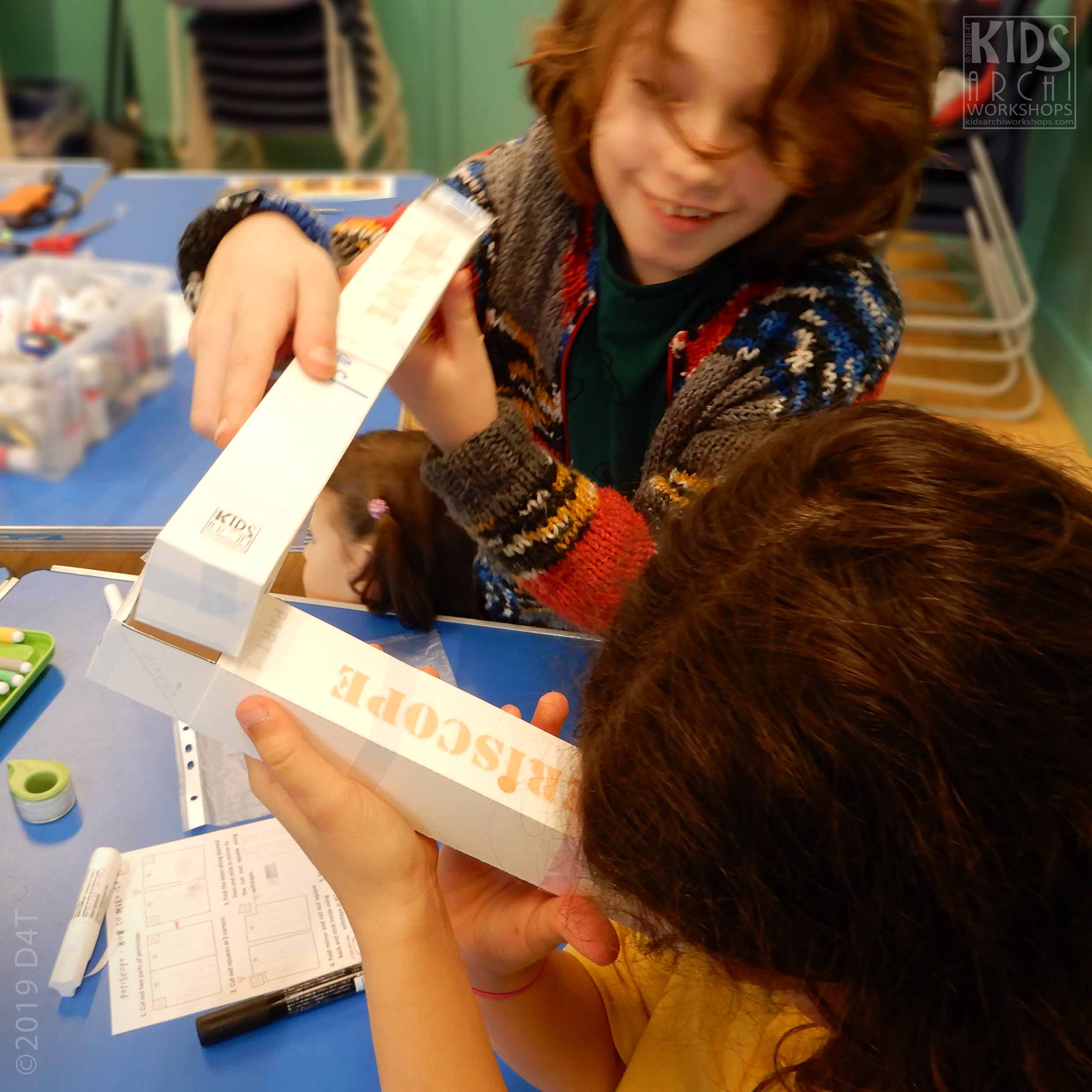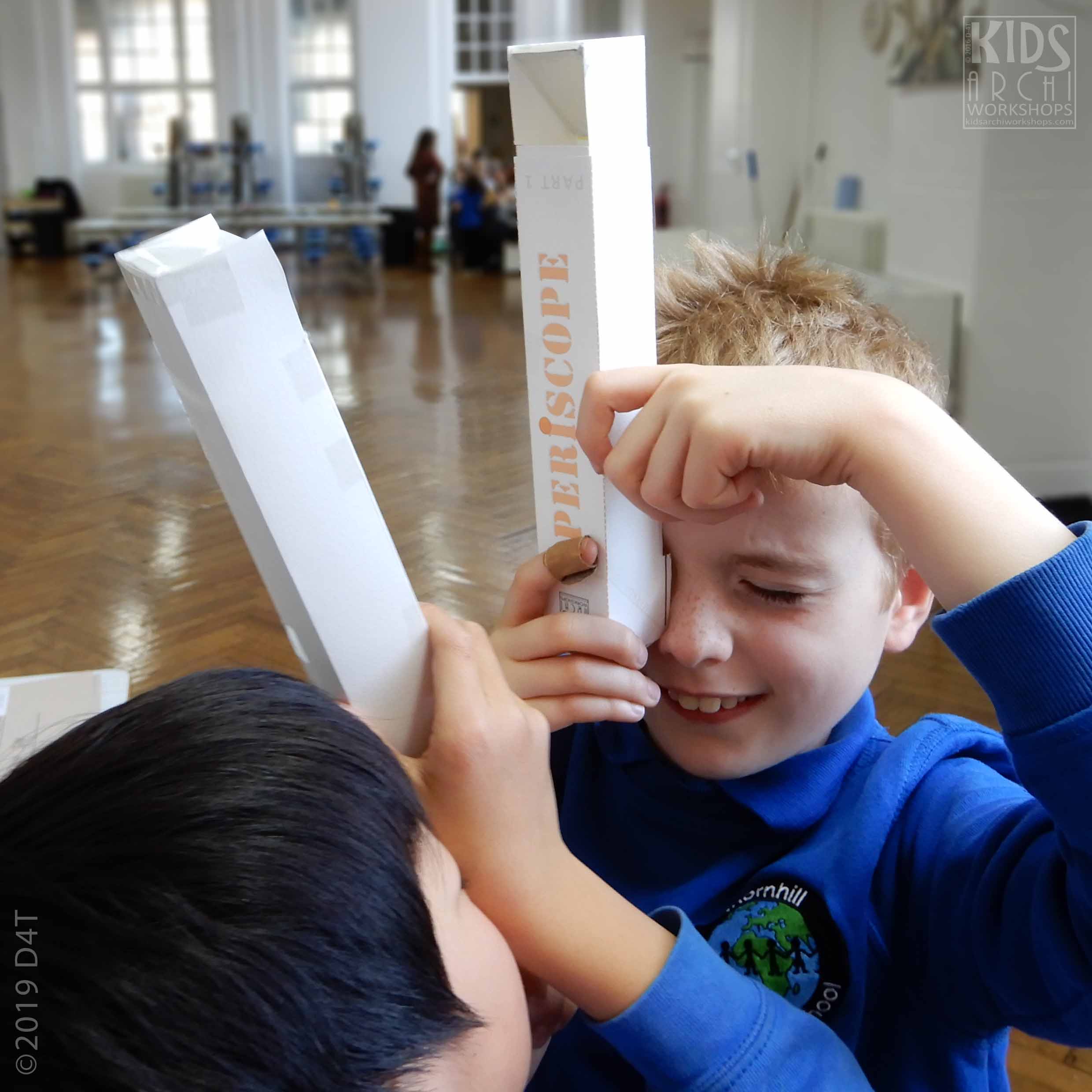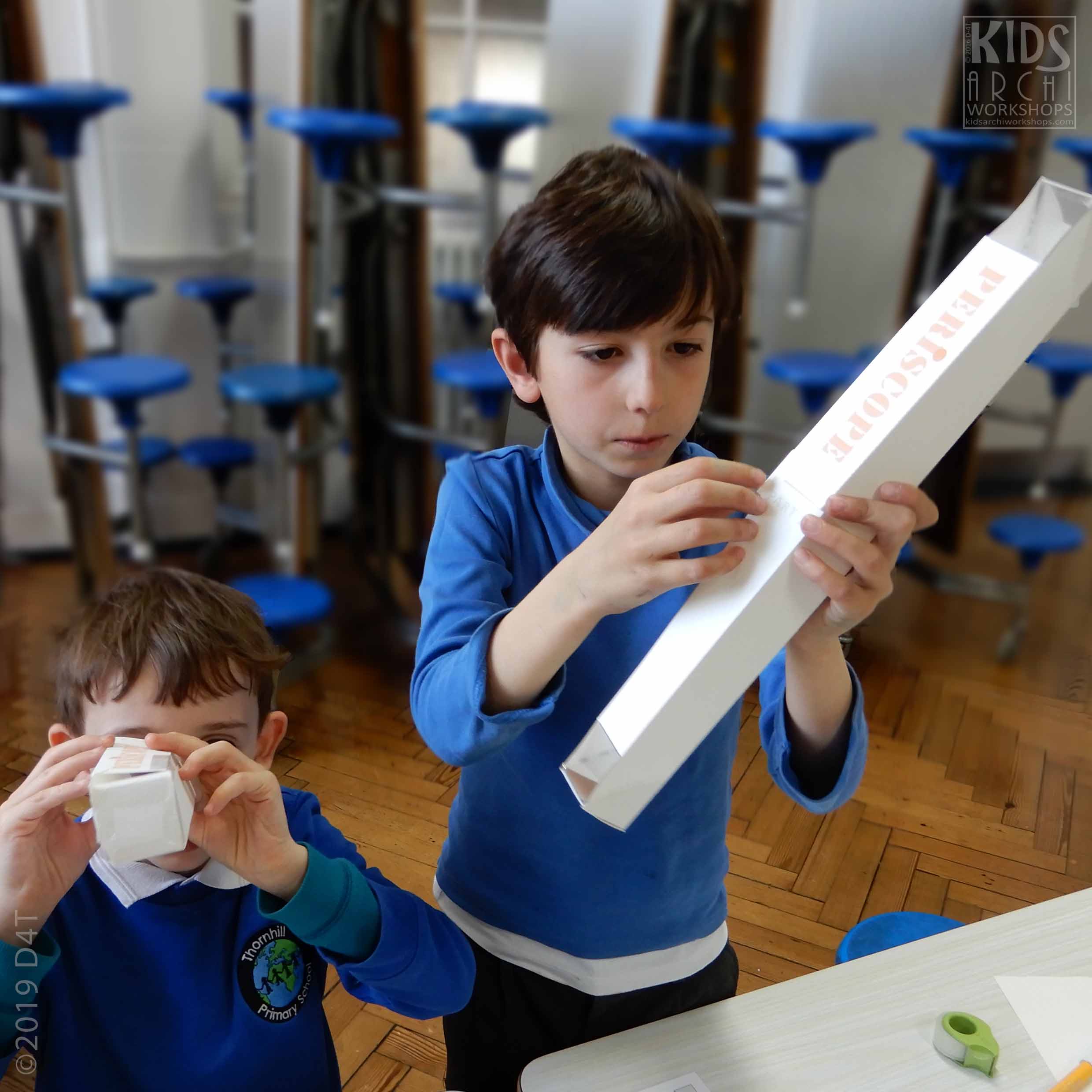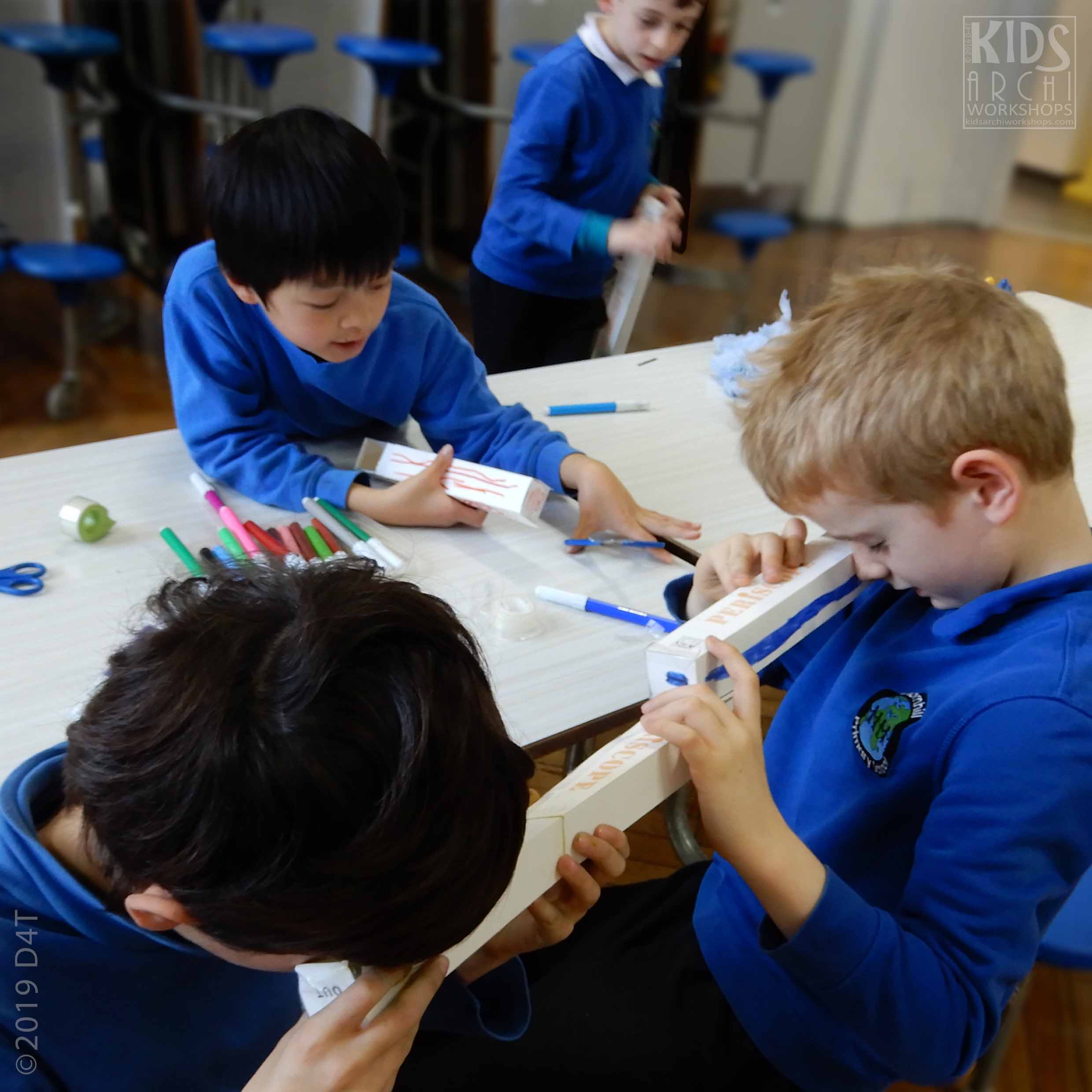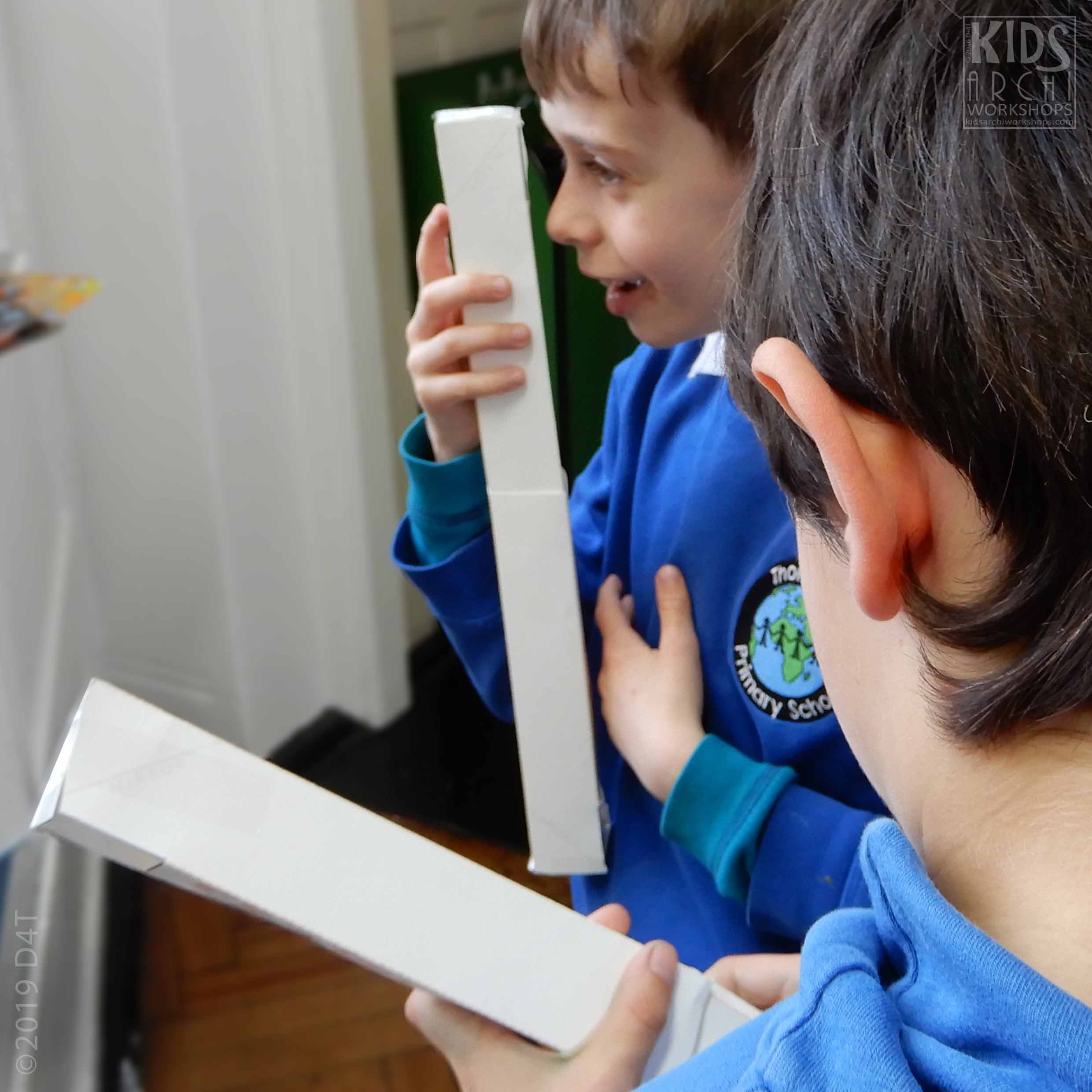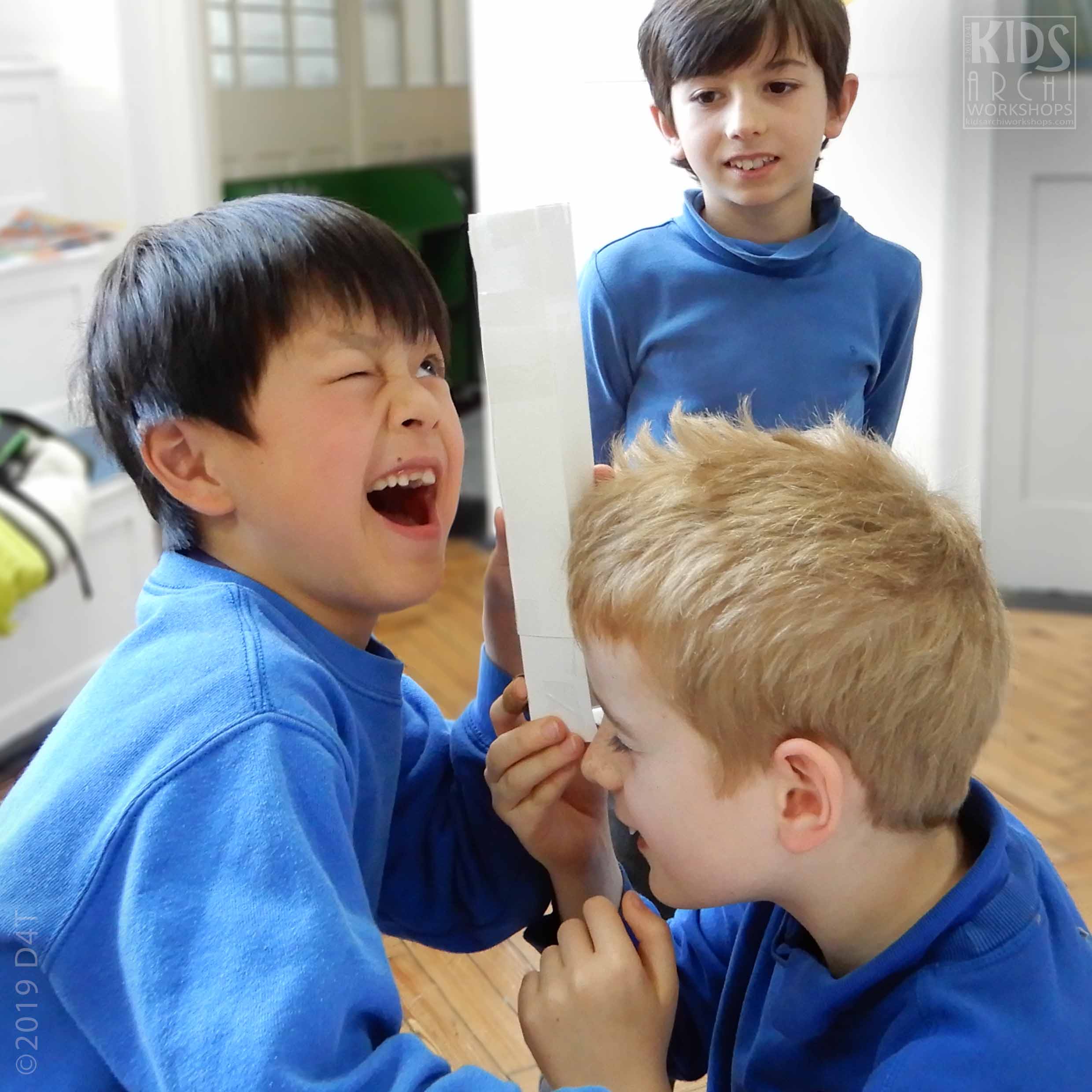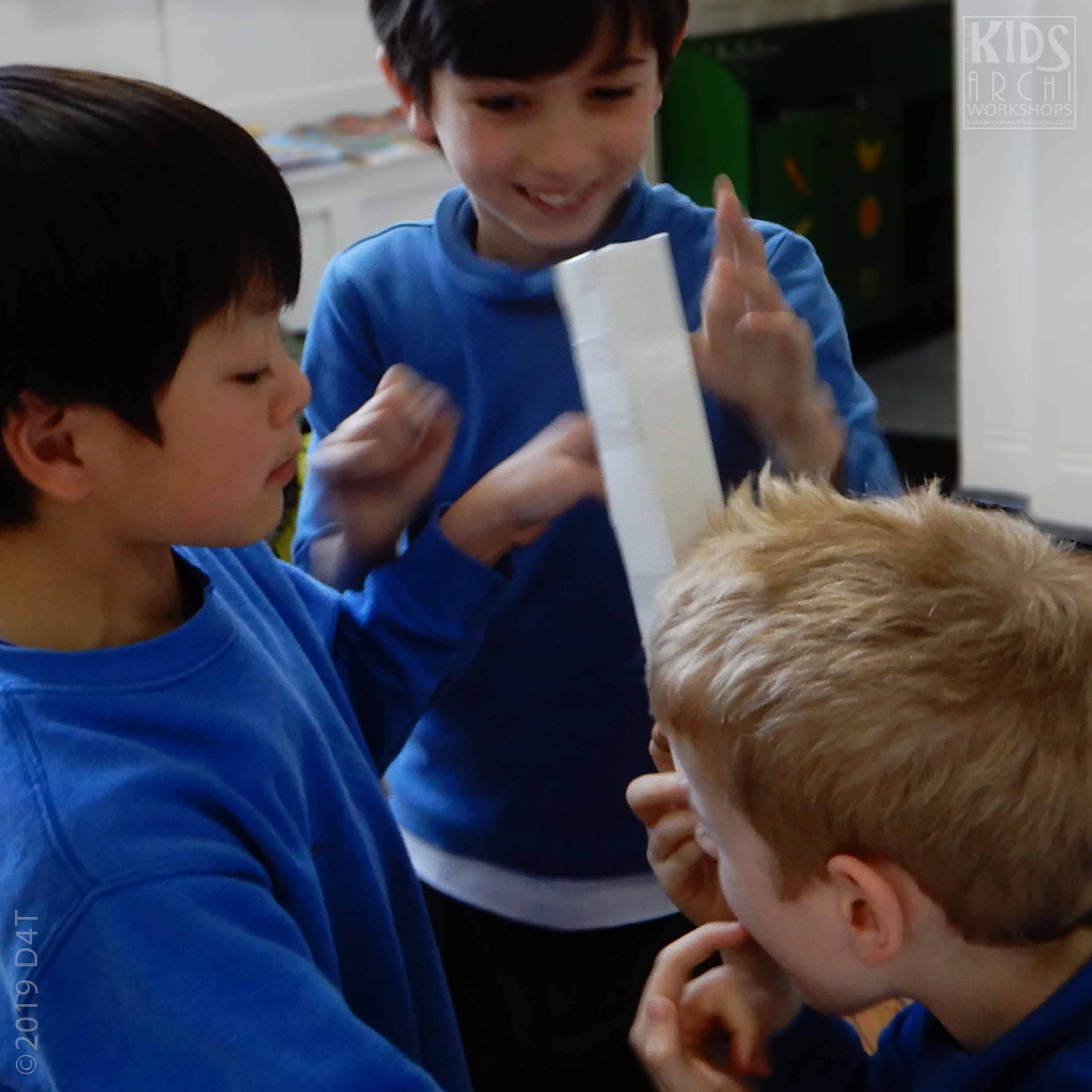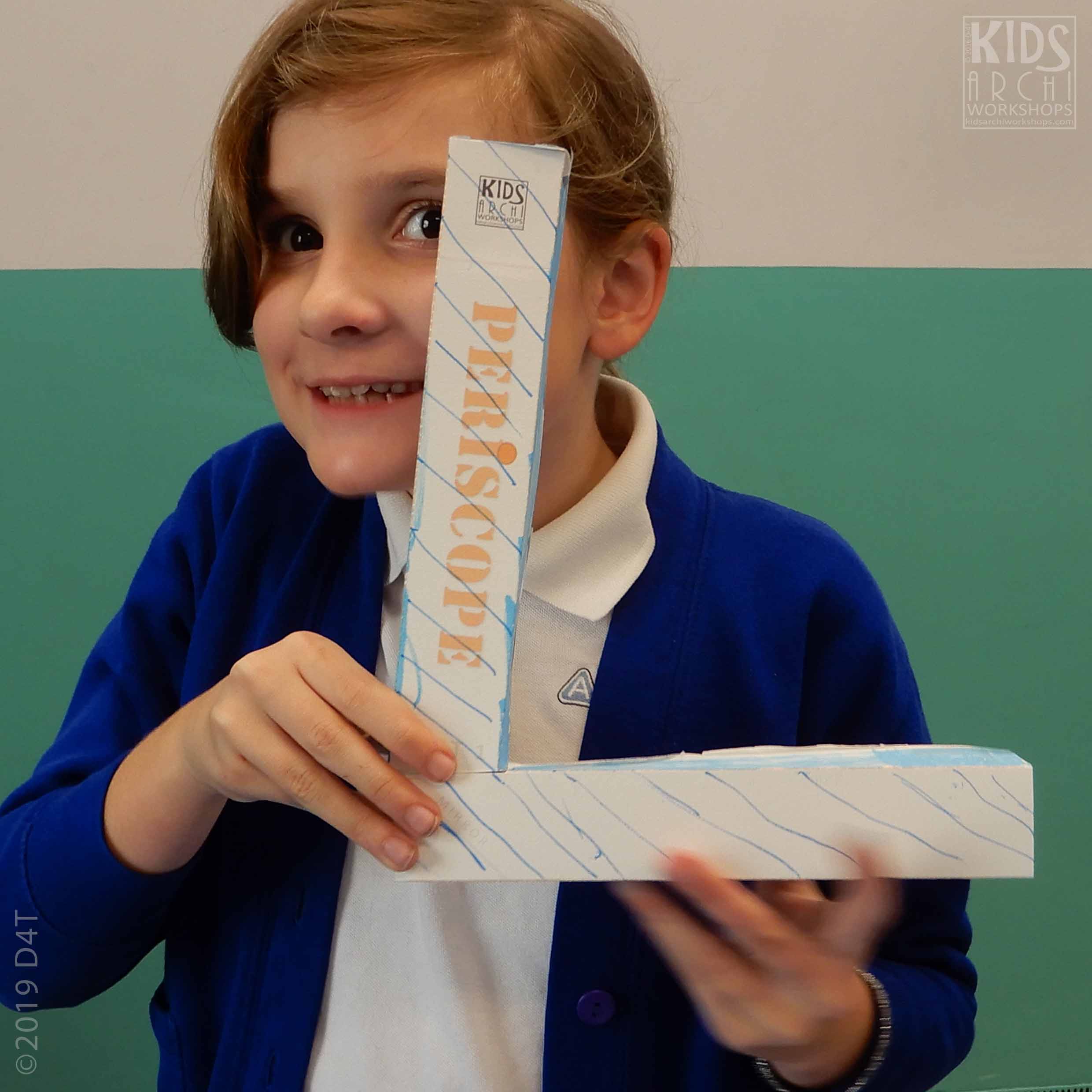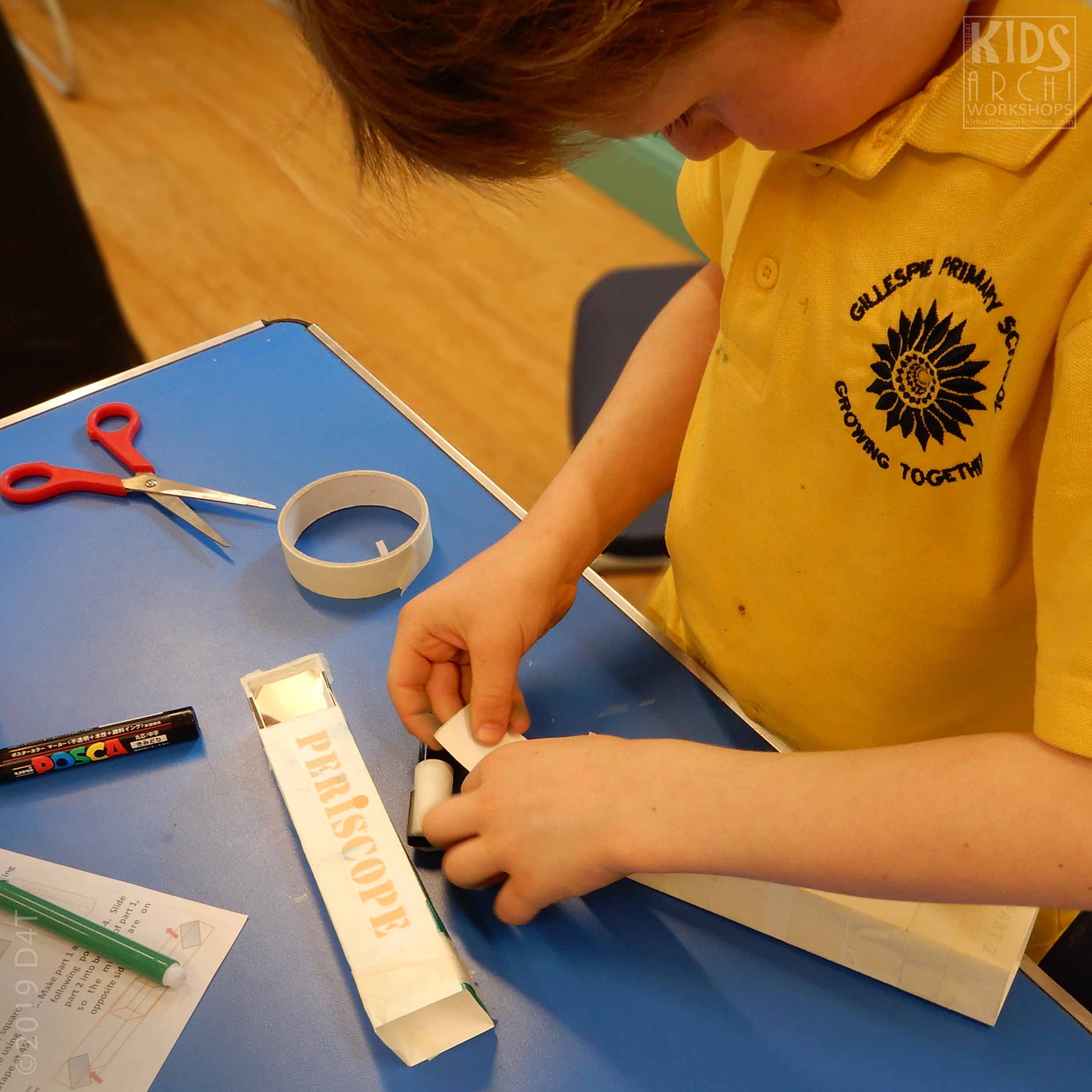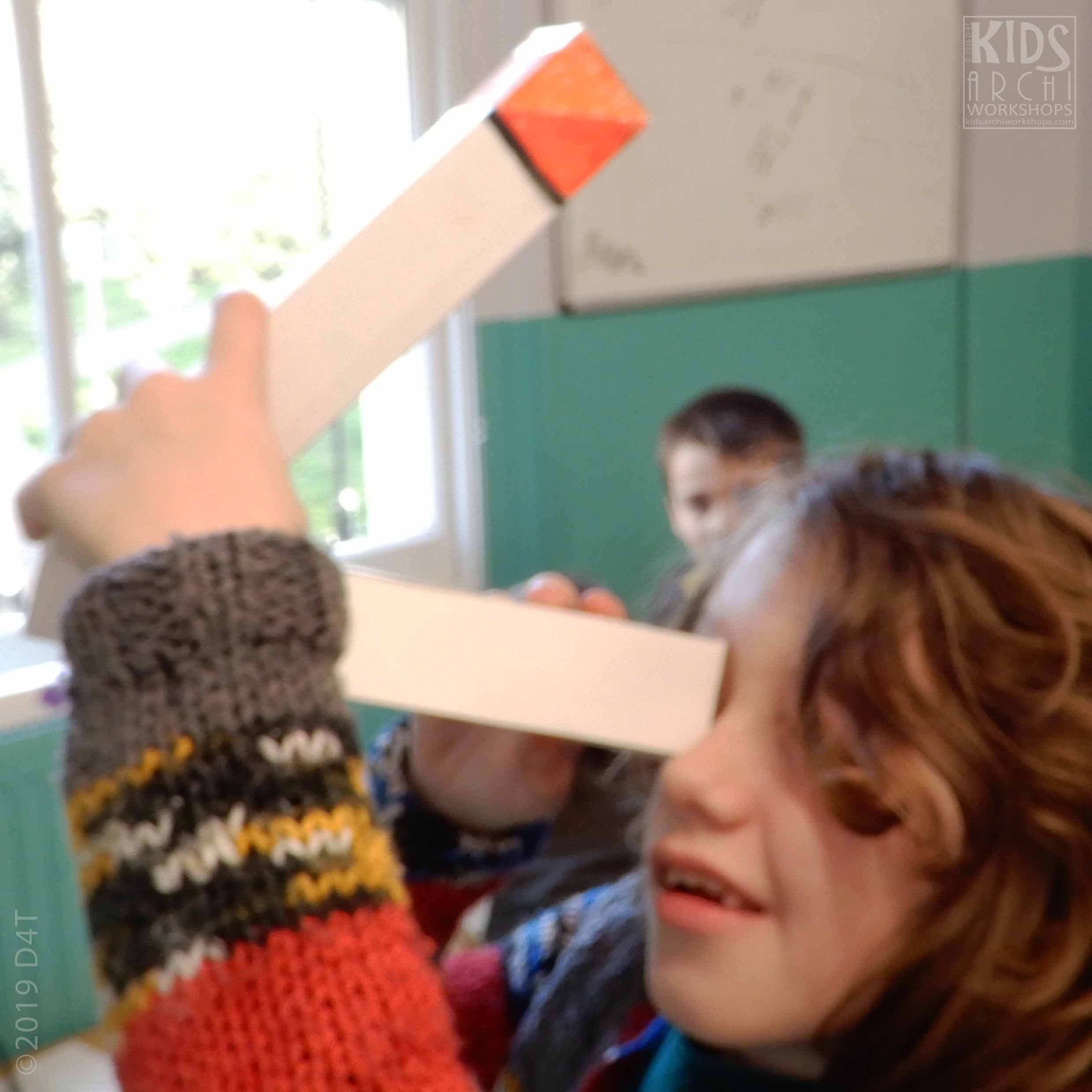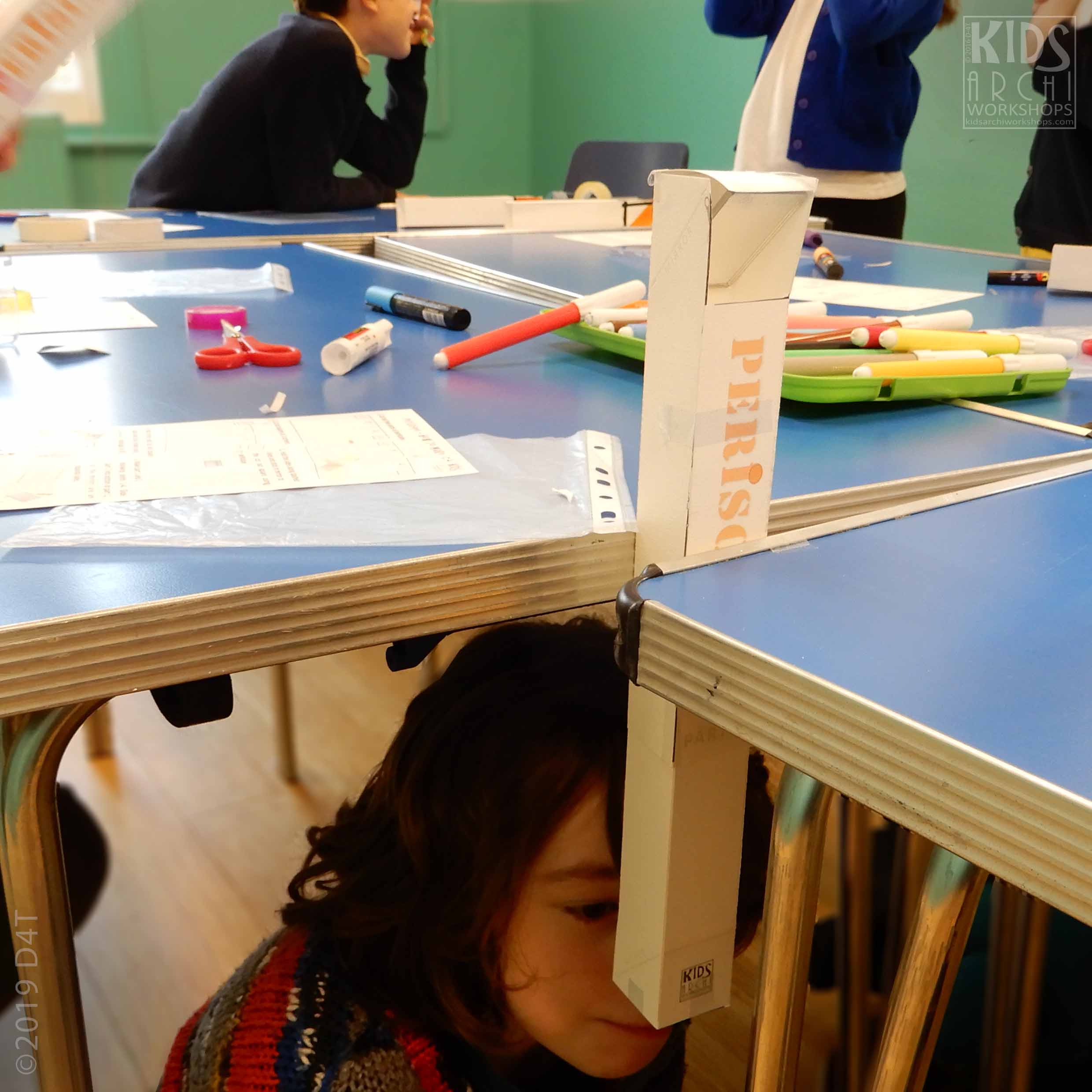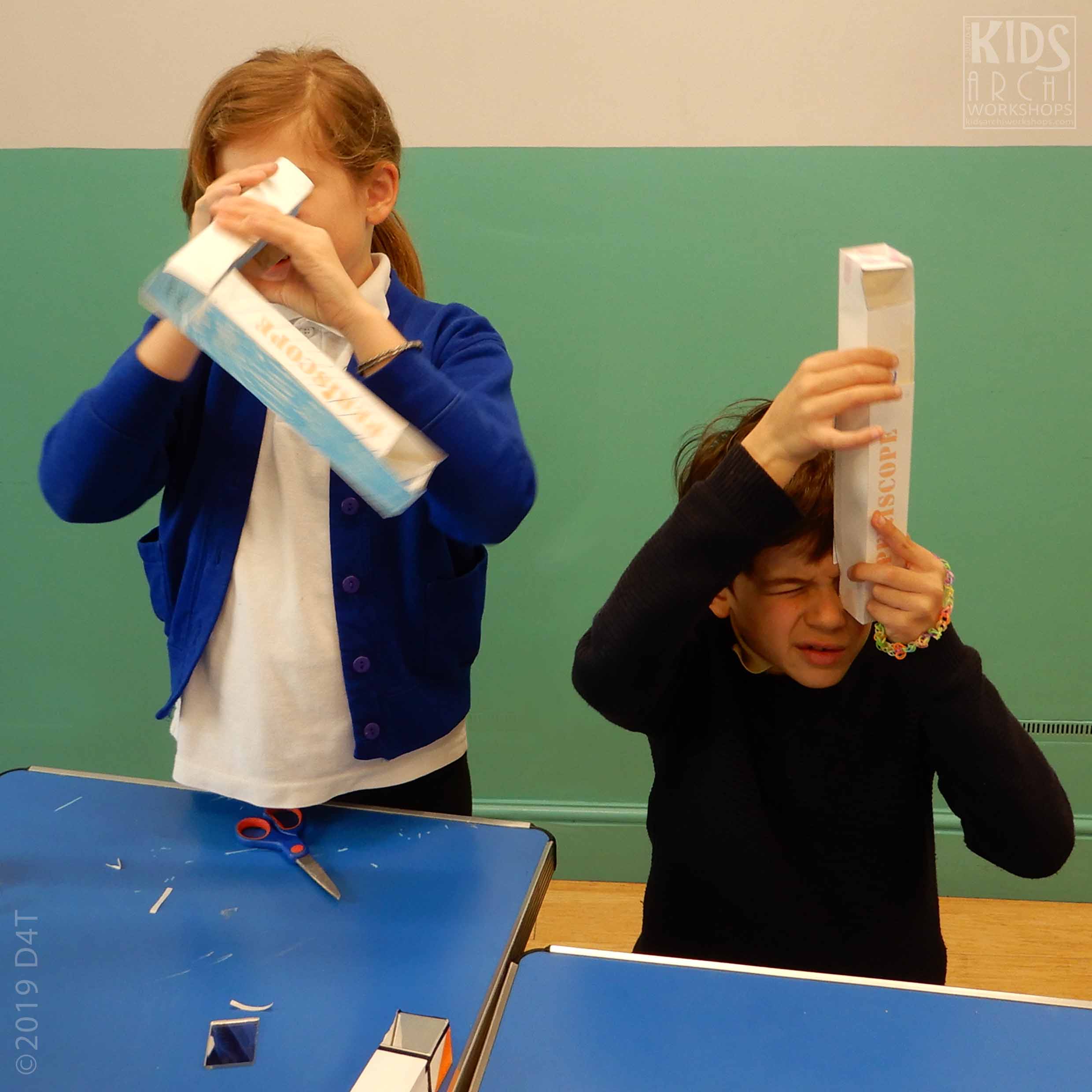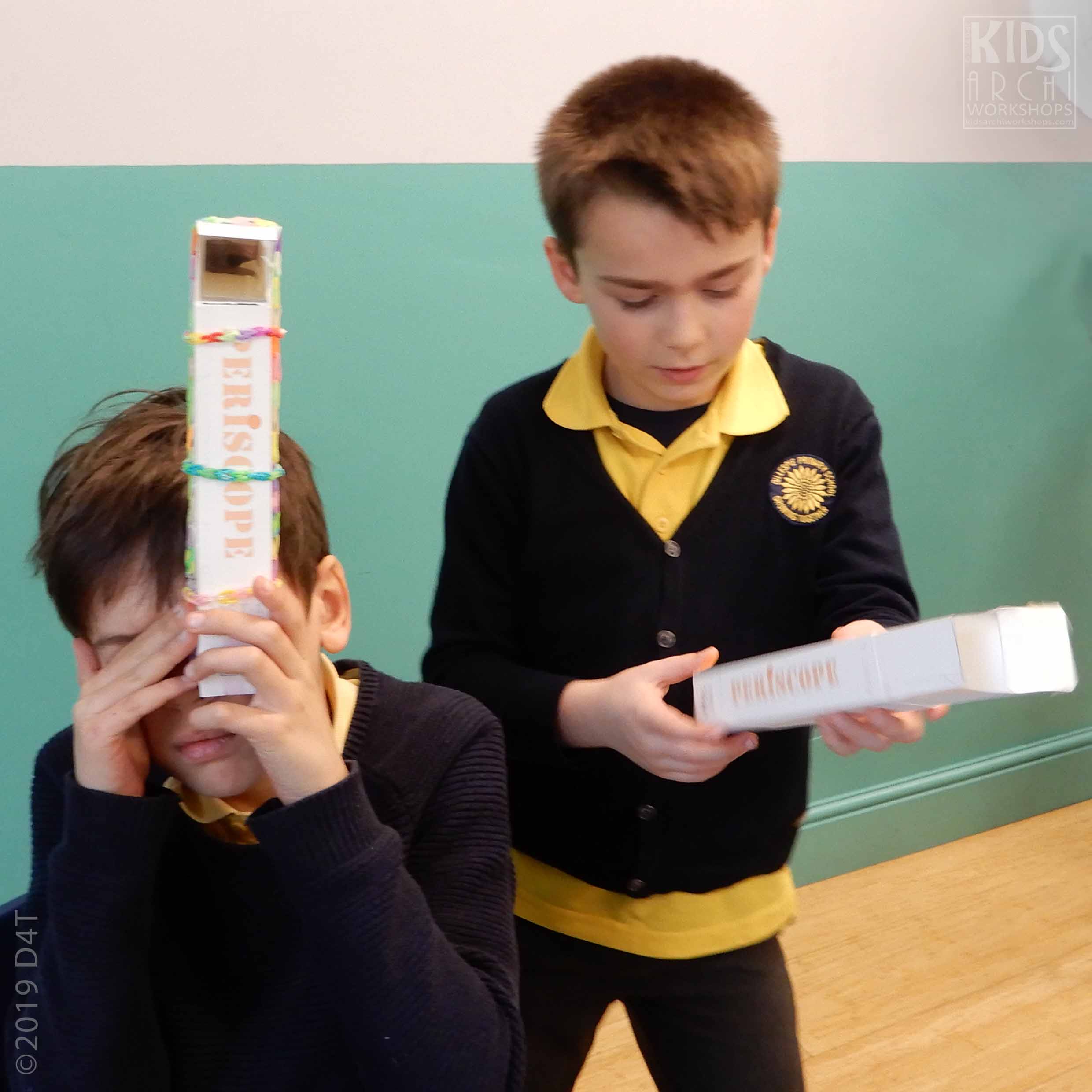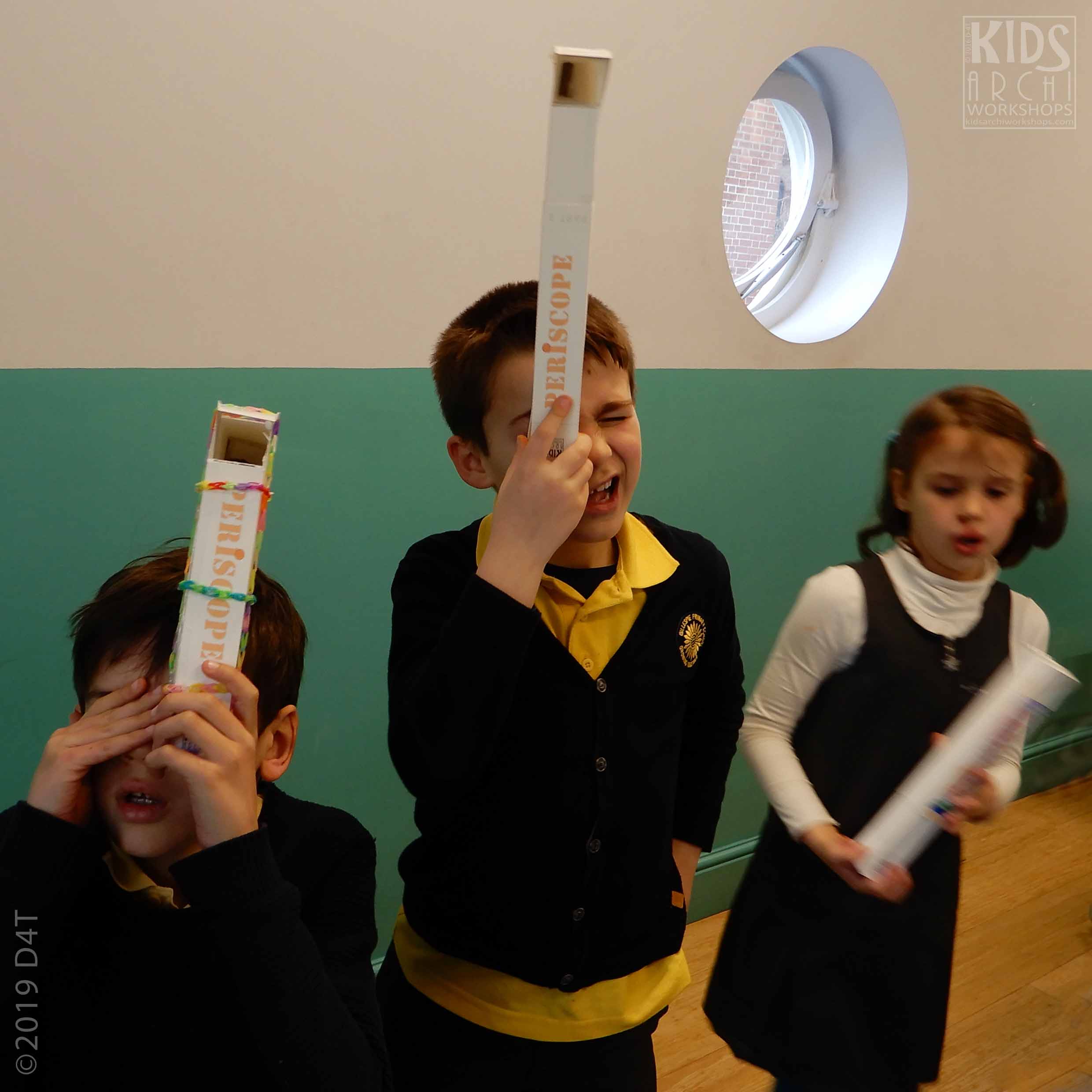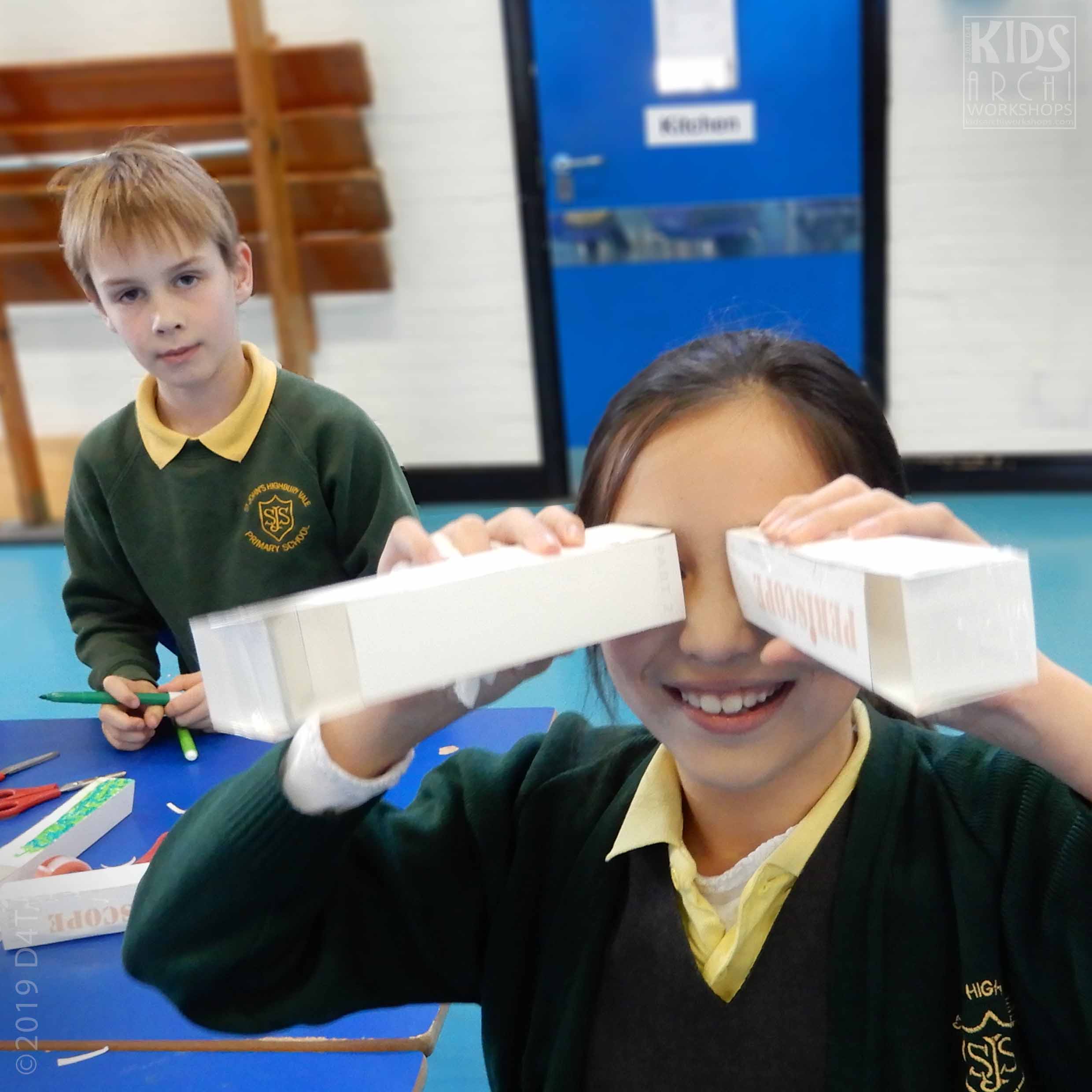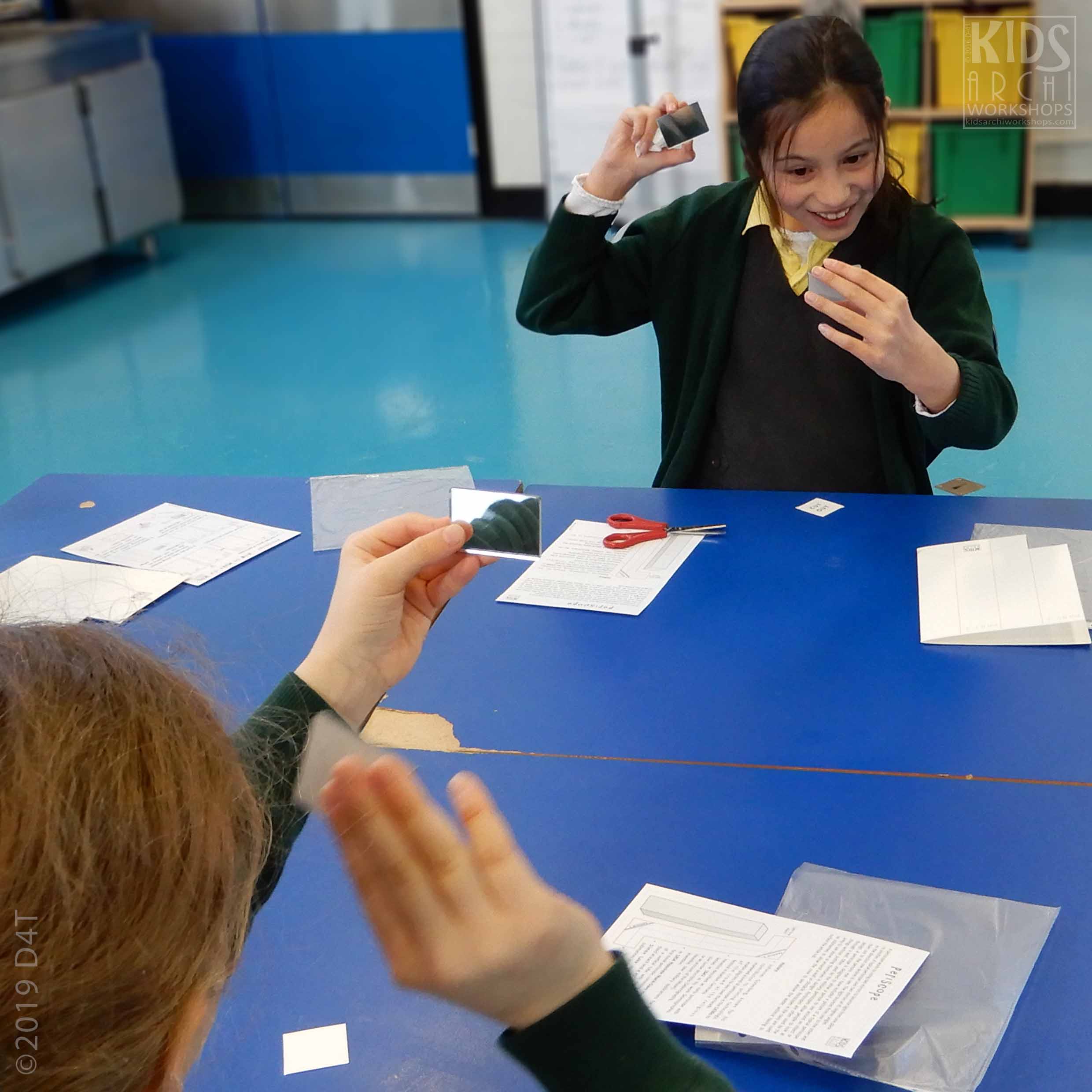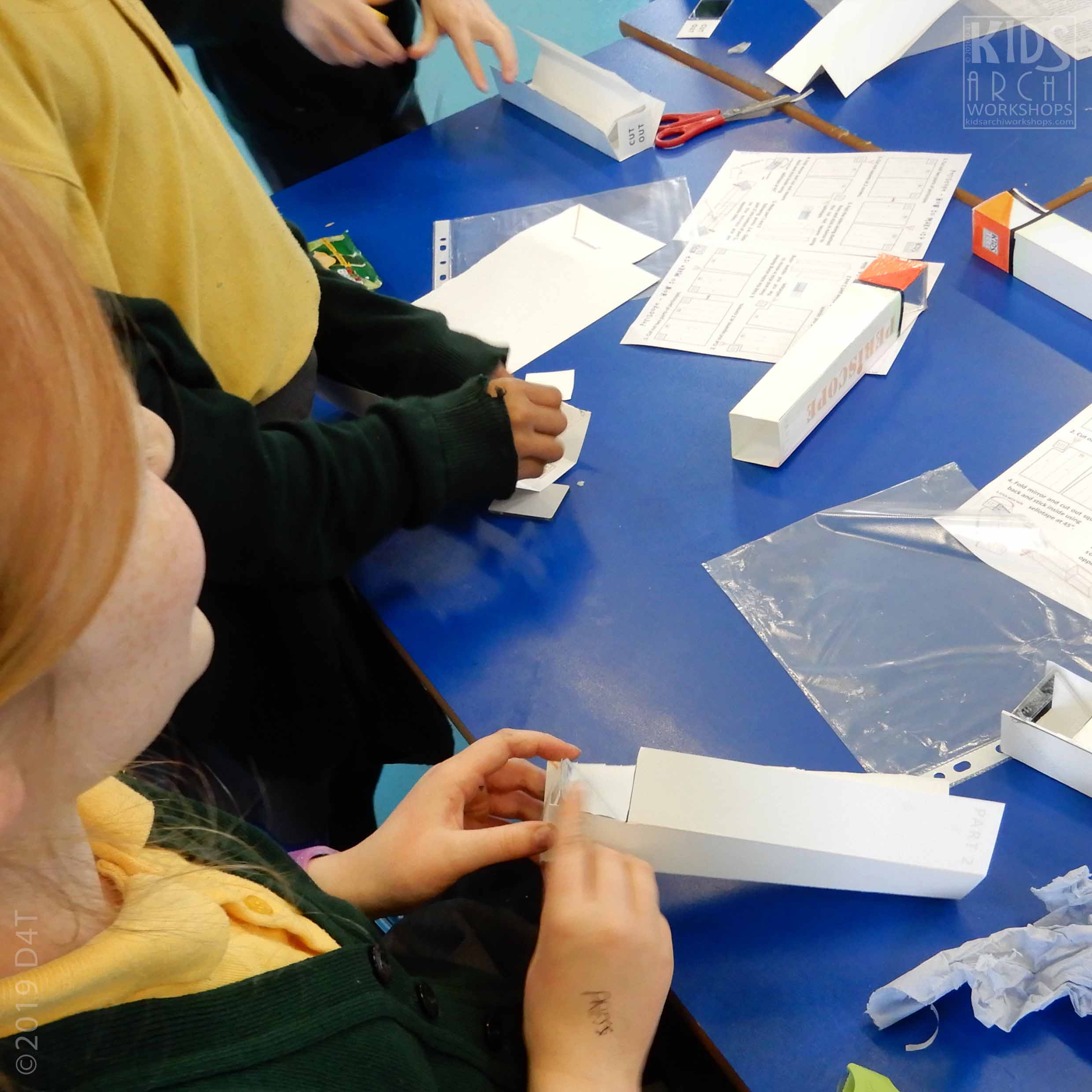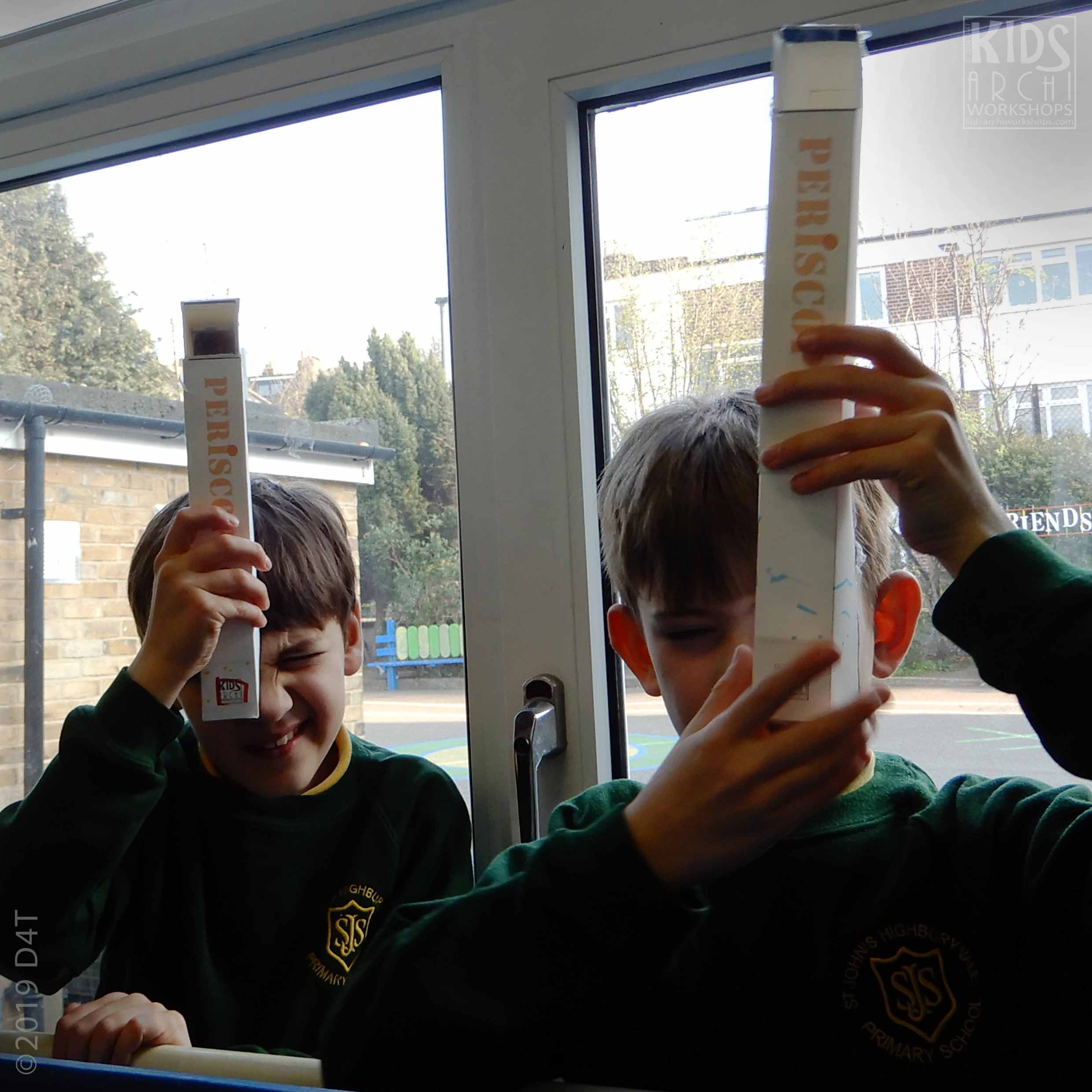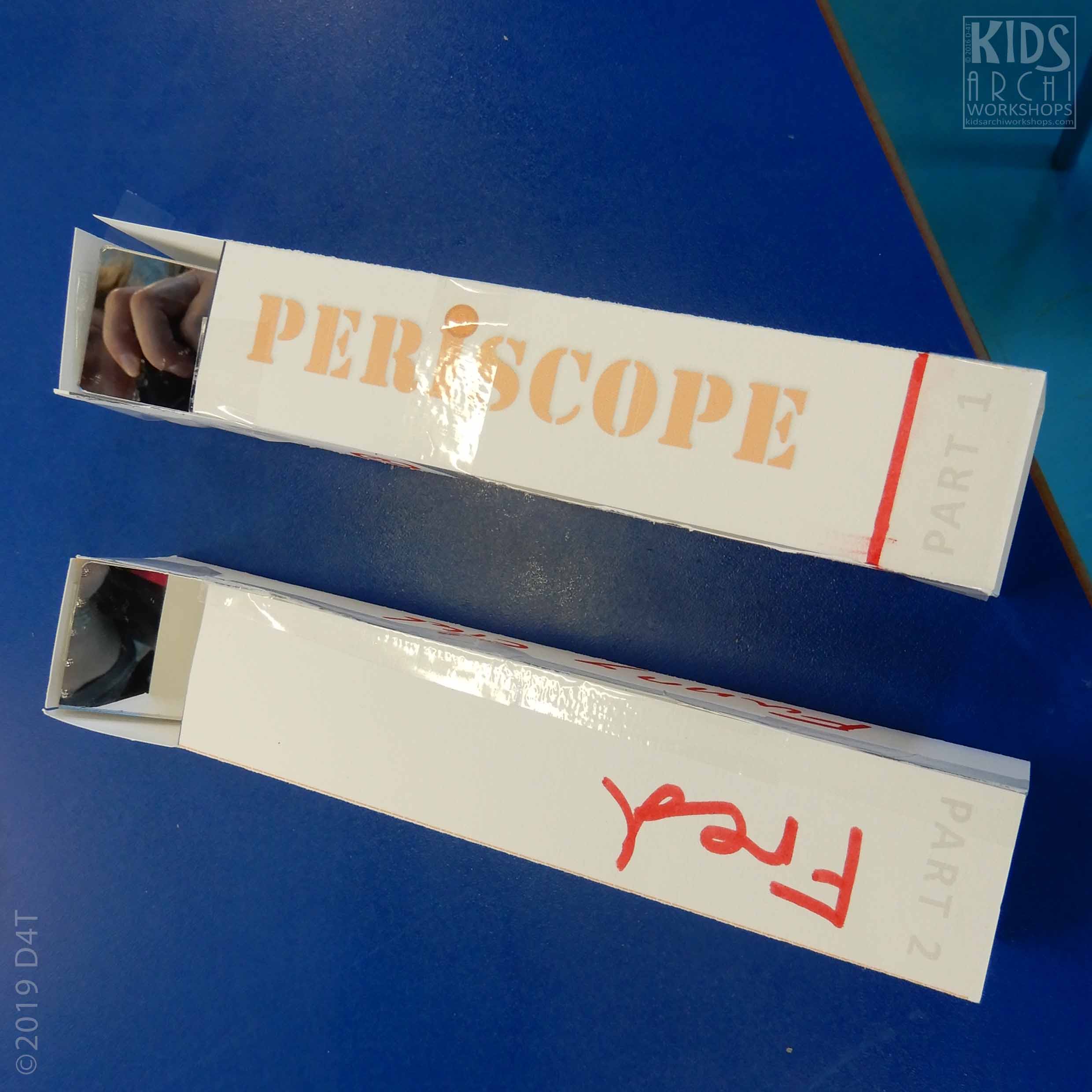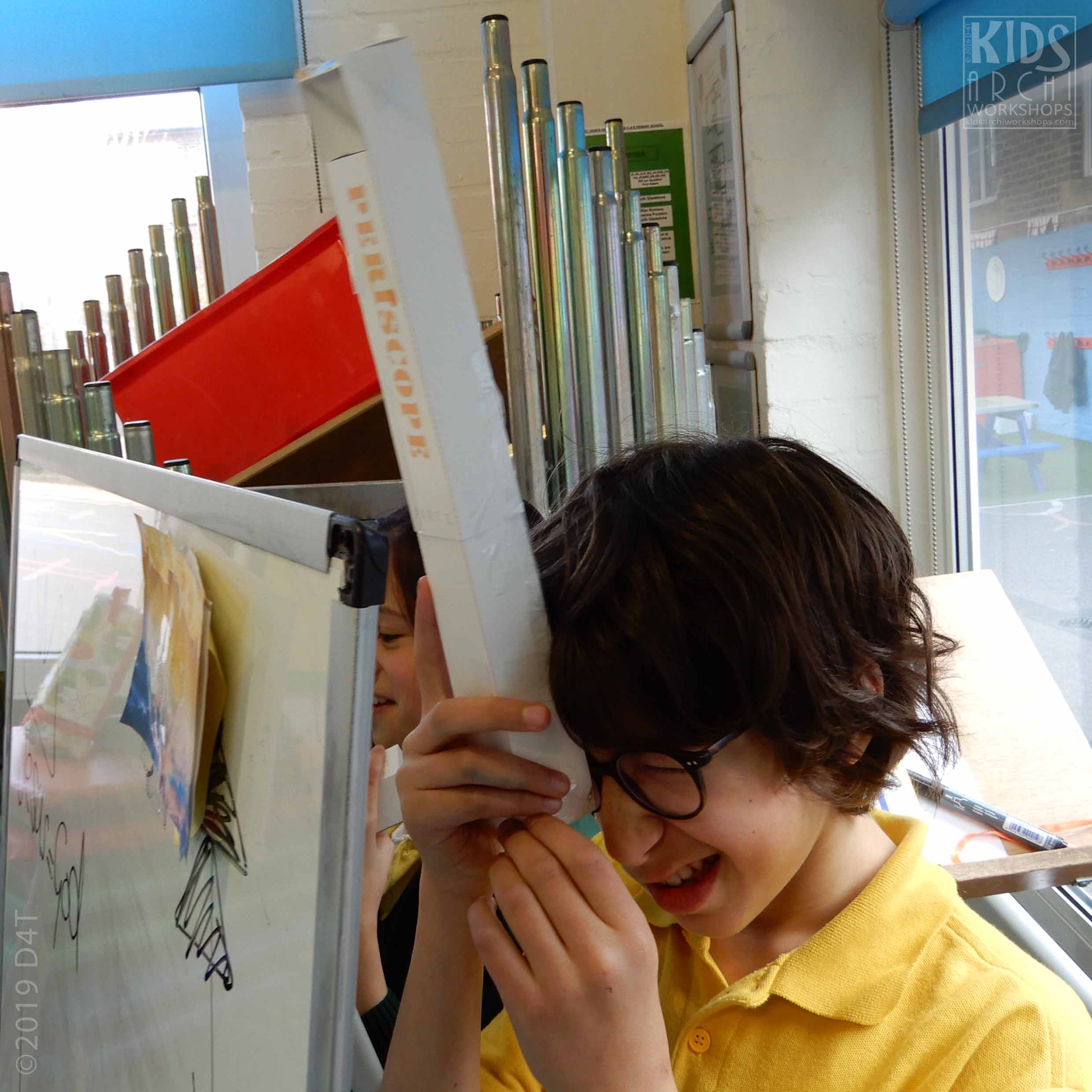periscope
Building a Periscope, learning about the principles of reflection……
This week workshop was themed around learning about the principles of reflection.
Children have learned how to build a periscope, then experimented with positioning the mirrors to obtain a true reflection, upside down and sideways one.
Kids tried also to capture the reflection of the reflection, looking beyond, above and around obstacles.
They came with lots of applications for the device they have constructed…
Great work everyone!
PERISCOPE:
A periscope works by using two mirrors to bounce light from one place to another. A typical periscope uses two mirrors at 45 degree angles to the direction one desires to see. The light bounces from one to the other and then out to the persons eye.
HISTORY:
In the 1430s Johannes Gutenberg, known for his contribution to printing technology, marketed a kind of periscope to enable pilgrims to see over the heads of the crowd at the religious festival in Aachen, Germany.
In 1647 Hevelius described an early periscope with lenses in his work Selenographia, sive Lunae descriptio [Selenography, or an account of the Moon]. Hevelius saw military applications for his invention.
In 1854 Hippolyte Marié-Davy invented the first naval periscope, consisting of a vertical tube with two small mirrors fixed at each end at 45°.
In 1902 Simon Lake used periscopes in his submarines.

